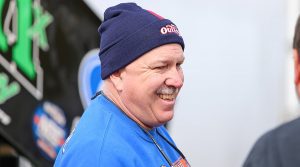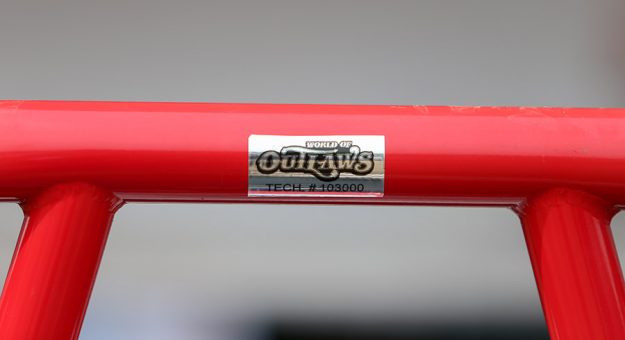World of Outlaws and All Star Circuit of Champions rules state the Mil-Spec of the chassis tubing must fall between a plus-minus of 10 percent. So, for Reutzel’s case, if the top rail calls for .095 of an inch, anything less than .0855 is deemed illegal.
“At one point we talked about is our percentage too high? Should we narrow that margin?” Walls said. “The conclusion we came to with that was, if we do that, it throws the price increase where they have to go to a higher standard and it just would certainly make the market 10 times harder than what it already is.”
On the manufacturer front, Dan Musselman, owner of Maxim Chassis, orders everything within World of Outlaws specifications. The mills, however, also operate within the plus-minus variance of 10 percent and because of that some material tends to run leaner, perhaps to maximize profit.
“You obviously have to pay attention to that,” Musselman said. “When the material comes into our place, we spot check with an ultrasound to verify where we’re at. If everything checks out clearly, then we go into production with the material.”
From there, chassis are subsequently ready to purchase.
“We leave it up to Maxim to build a car that is within legal specs,” said Phil Dietz, crew chief for Jason Johnson Racing. “The last thing they want to do is jeopardize their brand and their business for producing something that may be even borderline legal.

“We’re fully confident they build us cars within spec, cars that are safe,” Dietz added. “Safety is our No. 1 priority here. The last thing we want to do is jeopardize safety for any kind of performance advantage.”
On a weekly level, Knoxville (Iowa) Raceway has also adopted the World of Outlaws technical procedures, including frequent use of an ultrasonic tester.
Other tracks, such as Williams Grove Speedway in Mechanicsburg, Pa., follow the World of Outlaws but don’t use the ultrasonic tester frequently.
“Tom checks a lot of cars every night and all of our regulars run with the Outlaws, so I don’t bother testing them,” said Ed Clapper, Williams Grove Speedway technical director. “Unless I see welds that look different on one side or the other, or if the front and rear differ, then I’ll check the whole car, or at least one side of the car.”
Clapper, 76, leans on his keen sense of judgment, which started under the guidance of Indianapolis 500 competitor Frank Fiore. If Clapper is going to inspect a chassis, it’s usually to look at repairs or welds after an accident.
He does, however, have inspection stickers to verify the chassis he has approved.
“First of all, I don’t perceive my job as trying to find something wrong with the race car and then throwing it out,” Clapper said. “I perceive my job as trying to find something wrong with the race car and help bring the car back into compliance with the rulebook. We don’t need to lose any more cars.
“Our rulebook is monkey see, monkey do with the Outlaws,” Clapper added. “They put something in their rulebook, we put it in ours. The only difference is they haven’t excluded lab tests on fuel.”
Even with Pennsylvania tracks Port Royal Speedway, Lincoln Speedway, Selinsgrove Speedway and BAPS Motor Speedway that host 410 events regularly, Clapper doesn’t feel the need to communicate with neighboring technical directors.
Clapper has learned through the years, at the local level at least, the technical work apart from the sanctioning bodies is dependent on ownership. That makes Devitt the only point of reference Clapper needs.
“They are the No. 1 sanctioning body in winged sprint car racing,” Clapper said. “If we’re doing what they’re doing, we can’t be doing much wrong. So I don’t see a need to compare rulebooks with other tracks.”
“One of the nice things about the sprint car industry is we all talk,” Devitt said. “If we’re going to make a change, we make sure it’s good for everybody. Unlike some other series that fight against each other all the time, different realms of racing where everybody seems to be against each other instead of helping each other.
“The sprint car industry, it’s nice to have that comradery within the series that we’re able to work together to reach a common goal,” Devitt concluded.
